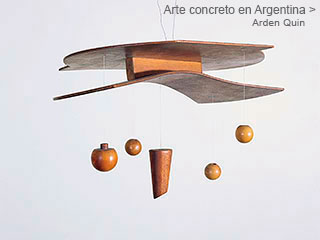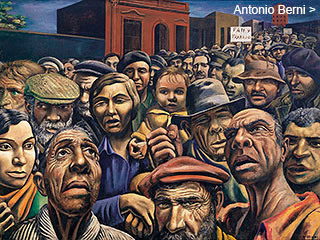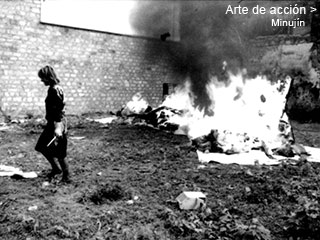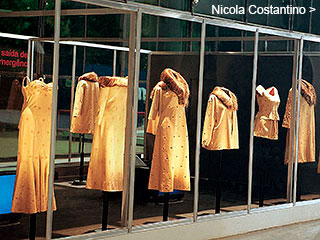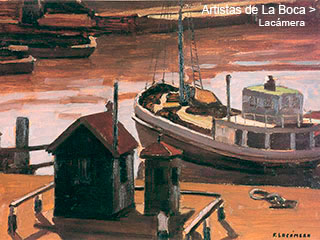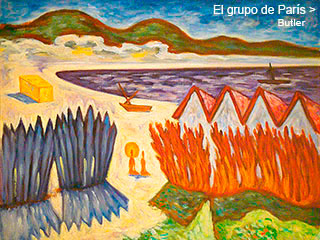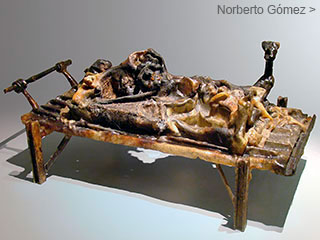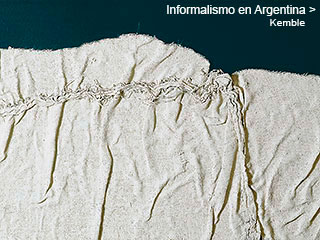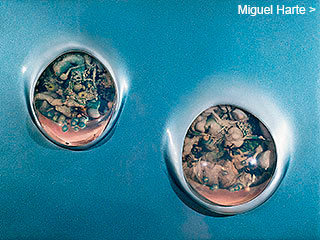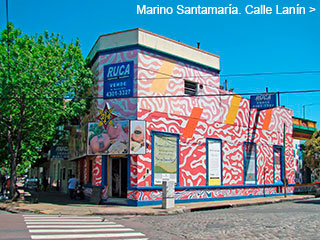Menú
Algunos dossiers
Concrete Art
in Argentina
in Argentina
by
Adriana Lauria
January 2003
January 2003
Abstraction asserted itself in Argentina through the achievements of groups such as Arte Concreto-Invención, Madí and Perceptismo, which developed their activity since the second half of the 1940s. These groups constituted the first organized national avant-garde and made their aesthetics known to the public through exhibitions, magazines, manifestoes, leaflets, lectures, etc.
Documents
Abraham Haber
Abraham Haber. "La pintura perceptista" (The Perceptist Painting), in Raúl Lozza. Primera exposición de pintura perceptista (exhibition’s catalogue). Buenos Aires, Galería Van Riel, 1949.
It is as it is seen and is seen as it is, while in representative painting things only appear as they are. The contradiction between being and being seen is thus eradicated. Man’s optical world, which he applies on things in order to see them, is now concreted upon a physical object because of colors and shapes, matters of vision, while formerly, through a whole technical proceeding, it was claimed that the optical laws had accepted the appearance in which the physical world had been transformed.
These results were obtained by Raúl Lozza after an evolution process impelled by pictorial practice and by theoretical researches which, as it is said, converge at the same point.
The colors-forms are not isolated in an ideal world or in a world alien to the one surrounding us; they are in our real, everyday environment, and constitute a plane world created within a common volumetric world, of which it is not necessary to detach in order to capture it. Concurrently, the observing subject does not “isolate” from his own everyday reality neither calls his personality to a temporary stop, because the feelings provided by the new art are normally incorporated to his psychic stream, while in representative art they disintegrated the subject’s personality to integrate in him the author’s individuality, constituting a dissolving element. This happens because figurative painting offers a structure of which the volumetric appearance is incompatible with the spectator’s tridimensional environment, while the forms of Perceptismo penetrate as planes into the volumetric reality surrounding him, in such a way that the subject situates in front of the painting with all his present condition, which was absorbed by representative painting. Representative art isolates the observer and disintegrates his personality. Facing the absorbing influence of figurative painting, Perceptismo is just one more object among all the objects that surround man’s life. It will not demand from the psyche which perceives it the interruption of its natural stride through the path constituting real life. It will not disorganize its own elements thrusting them in an arrangement demanded by the representative pictorial sensations as to let their emotional timbre to reverberate exactly as it did in the author’s spirit. Perceptismo vibrates in the observer, respectful of the flowing of his psychic dynamics, not subduing his personality, and it incorporates through the eye into the physiological ways carrying harmony and balance to human organism and to its psychic concomitant; the complex of feelings, ideas and volitions which constitute the spectator’s present condition is not rejected by an imposed representation, but it receives the influence of that balance which heightens and improves it. The contents of figurative art is an emotion that shifts his own emotions from the observer. The contents of Perceptist art are the spectator’s own feelings which receive from the art object the strength that will penetrate them with plenitude and optimism, carrying out its assignment of human perfecting.
For that reason Perceptismo is not an art of museum, place to which man goes, according to a predetermined timetable, to look for his ration of aesthetic feelings, but an “ambient” art that must go together with man in his daily center; at home, in the public buildings, in the means of transport, in the offices, in the workshops and streets, for it must reach man in the expression of his actuality and not in the exhaust pipe a museum room is.*
*From the book in printing “El hombre actual y la realidad estética”


